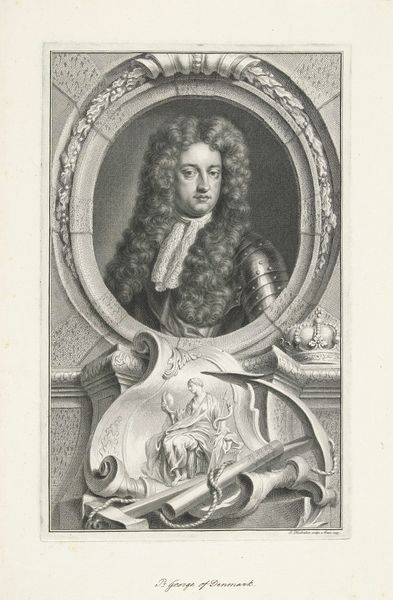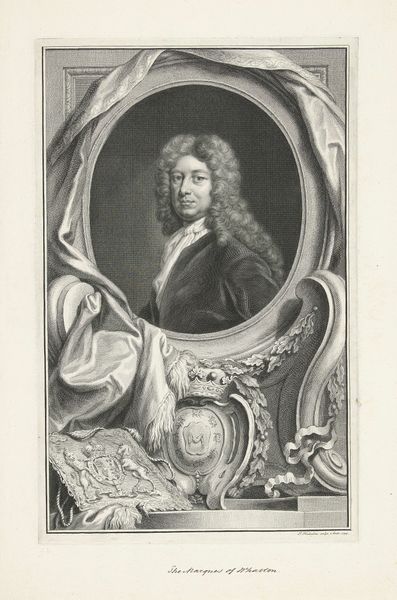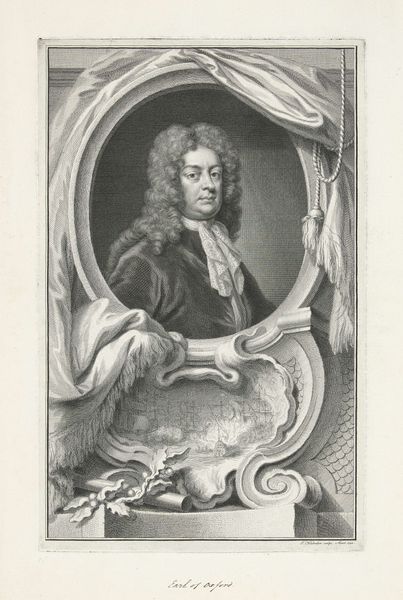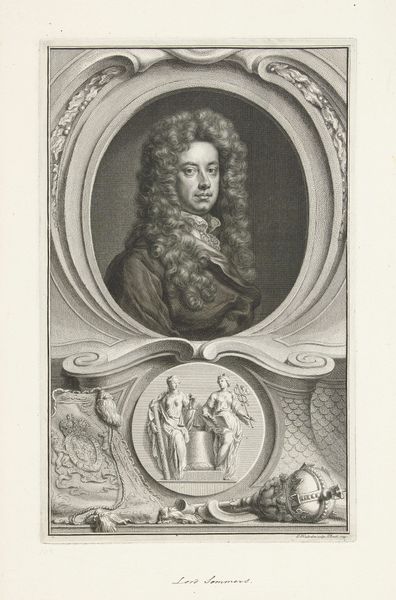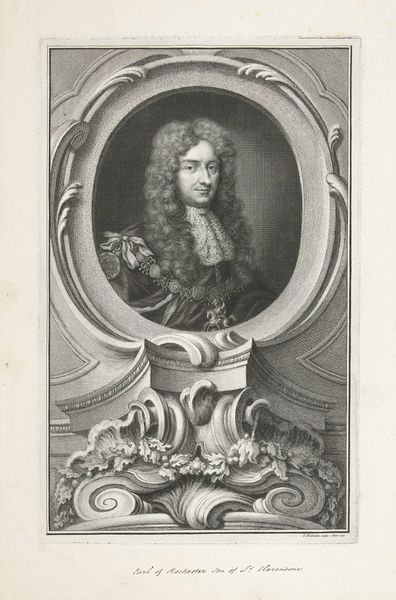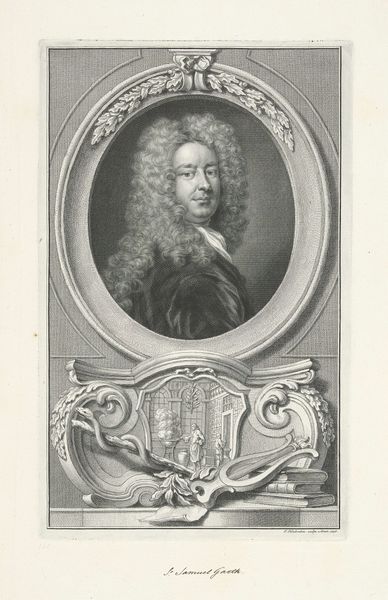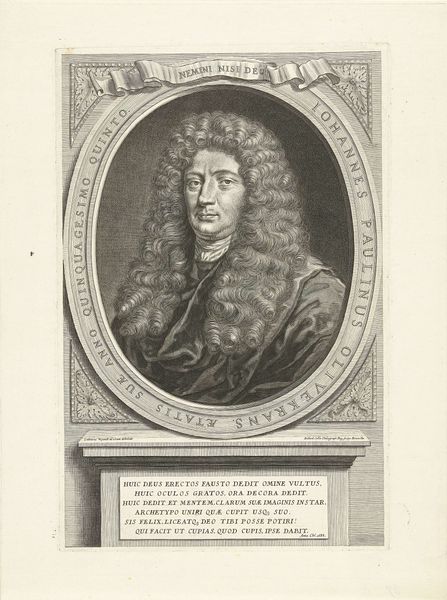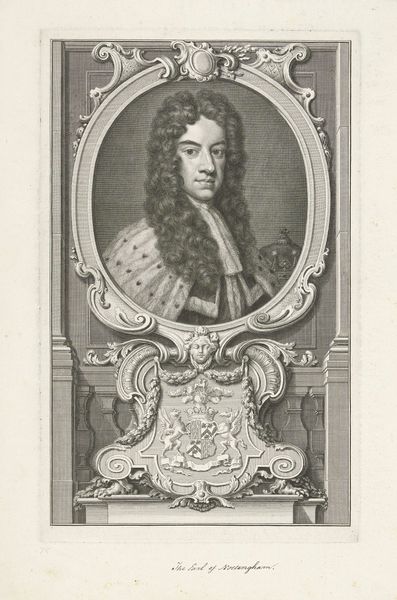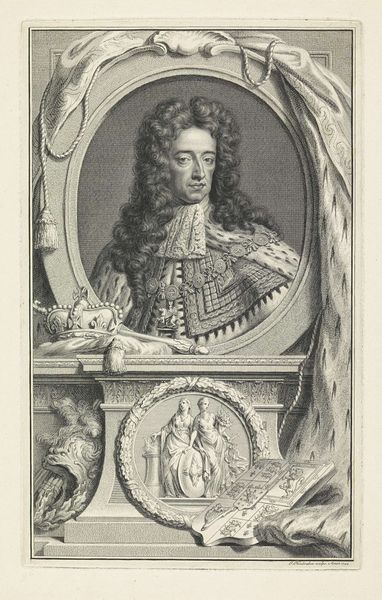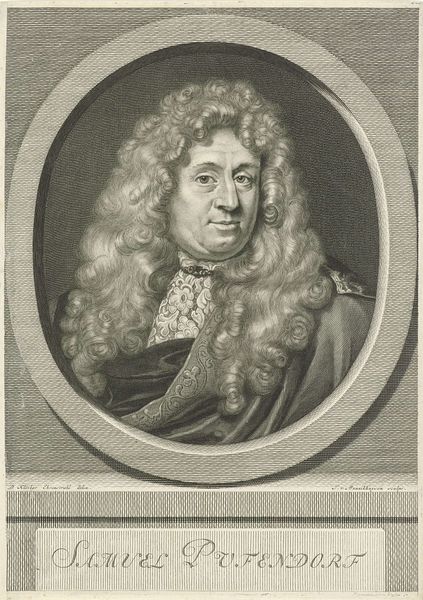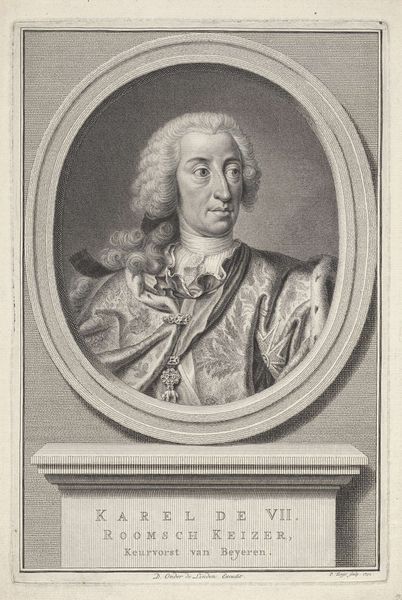
engraving
#
portrait
#
baroque
#
old engraving style
#
figuration
#
line
#
history-painting
#
engraving
Dimensions: height 350 mm, width 216 mm
Copyright: Rijks Museum: Open Domain
Curator: Jacob Houbraken created this engraving in 1747, it's titled 'Portret van George Byng.' We're viewing it here at the Rijksmuseum. Editor: It has that formal Baroque stiffness, doesn’t it? And yet, there’s something…dreamlike about it, perhaps even a touch fantastical? That tiny naval battle nestled at the base feels oddly out of sync with the imposing portrait above. Curator: Yes, engravings like this served a crucial function. They weren't simply artistic expressions, but reproduced images intended for wide distribution. Houbraken, renowned for his meticulous technique, was part of a network of skilled artisans responding to the market demands for portraits. This print medium enabled broader access and promoted the sitter, who was a navy commander. Editor: Which explains the miniature fleet engaged in battle beneath his rather stoic gaze! It's like the fellow is trying to appear as an imperturbable figurehead, entirely separate from the violent machinations implied below him. Does it smack a bit of propaganda? Curator: The naval battle alludes directly to his service, his social role. Notice also the cherubs looking down in favor, or the merman supporting the oval frame and seemingly staging the naval scene. Think about how engravers operated, reproducing likenesses on commission, within certain artistic conventions of the time to both idealize and commemorate their subjects. These images shaped public perception of important individuals. It gives one insight into that era’s power dynamics and representation. Editor: Fascinating! The precision demanded to capture detail using the engraving technique, all for mass consumption… it’s easy to romanticize craftsmanship of the era, yet these details keep its production firmly situated in marketplace. Curator: Precisely, it challenges the idealized, artistic mystique often associated with portraiture by connecting it directly to material circumstances and distribution methods. Editor: I'm leaving here feeling I got to know a bit more not just about this person who once lived, but also the people who ensured his memory lived on.
Comments
No comments
Be the first to comment and join the conversation on the ultimate creative platform.
